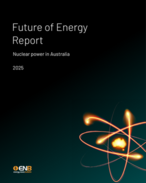This article is 21 years old. Images might not display.
The approach, called U-Th-He thermochronology, uses a method of determining the thermal history of the rocks in the Earth's crust from which oil is generated and is being implemented by scientists from CSIRO and Geotrack International.
"This method has the potential to save companies millions of dollars in wasted exploration effort by enabling them to withdraw earlier from unwarranted drilling programs," said Geotrack scientist Dr Paul Green.
"Most companies spend days modelling different scenarios and risking the outcomes. The application of this technique can reduce the time required by showing which scenarios are likely and which are not possible," said Dr Green.
CSIRO Petroleum Resources scientist, Dr Peter Crowhurst, said the technique allowed information to be obtained at lower temperatures than ever before. It can also identify the most recent event that occurred in a basin and its possible effects on petroleum migration.
"Of particular interest to clients is our ability to determine U-Th-He ages on single crystals of apatite and zircon," said Dr Crowhurst.
"This offers greater precision than work on multiple crystals because it reduces the risk of contaminated samples or a mixed age.
"The improved definition of the timing and magnitude of paleo-thermal episodes provided by this integrated approach means an improved definition of areas where timing of oil generation post-dates formation of structures, resulting in more efficient exploration."
Several pilot studies and commercial analyses using this technique have been successfully completed on basins in Australia, the Gulf of Mexico, the North Sea and Colombia.






















